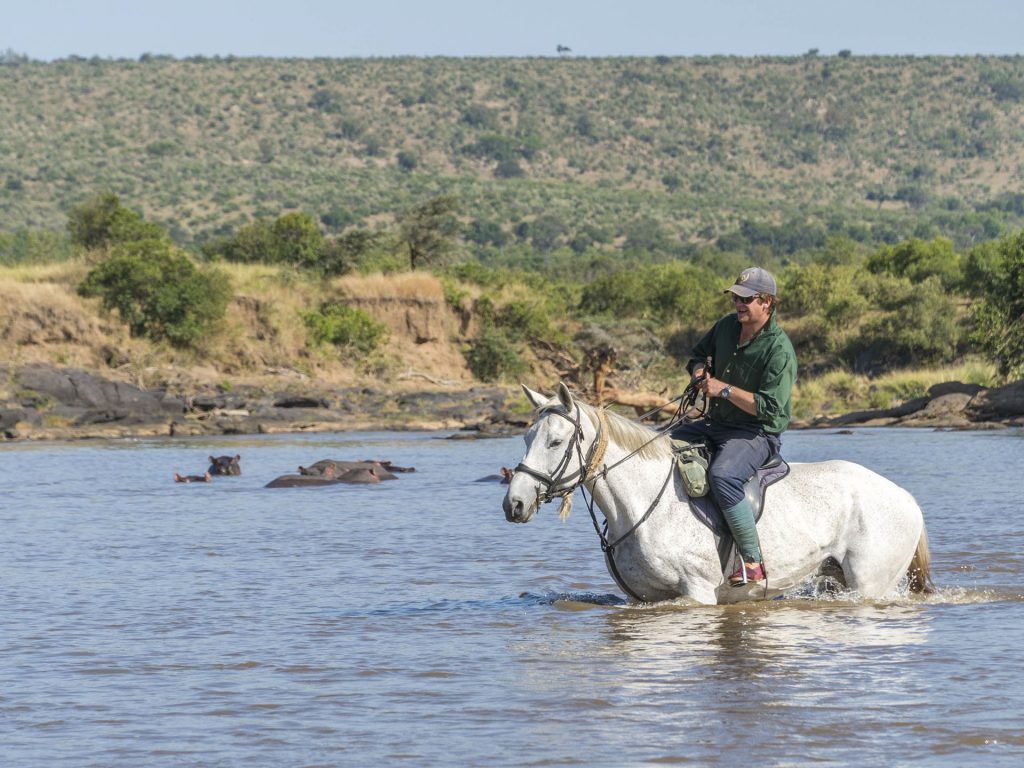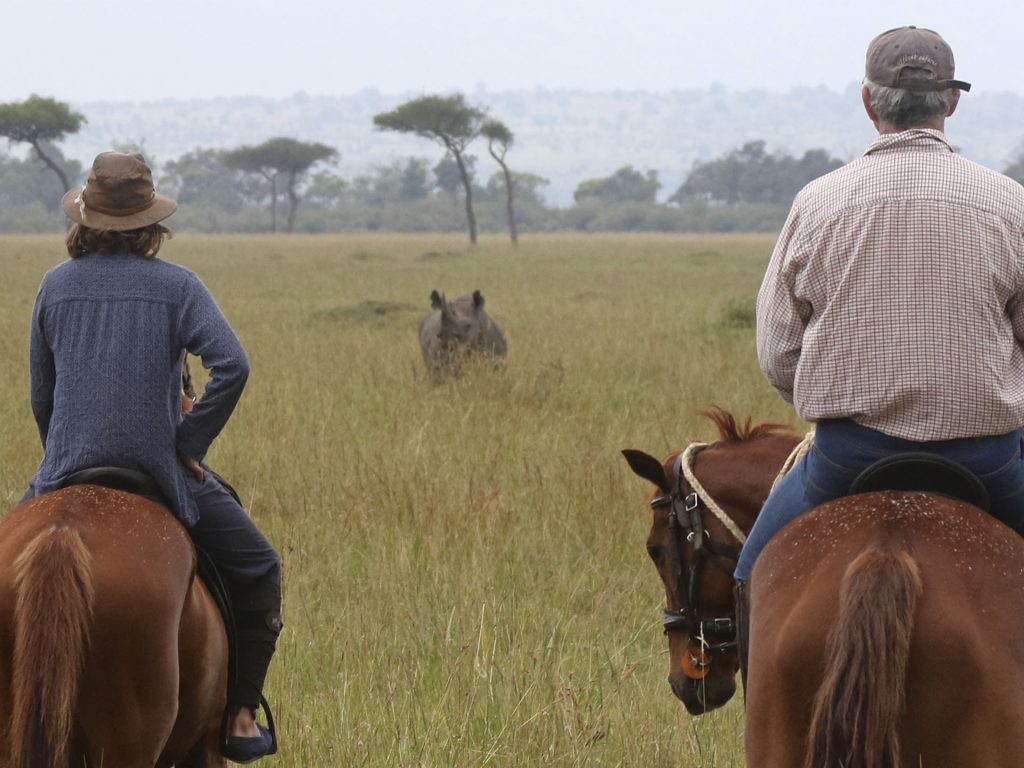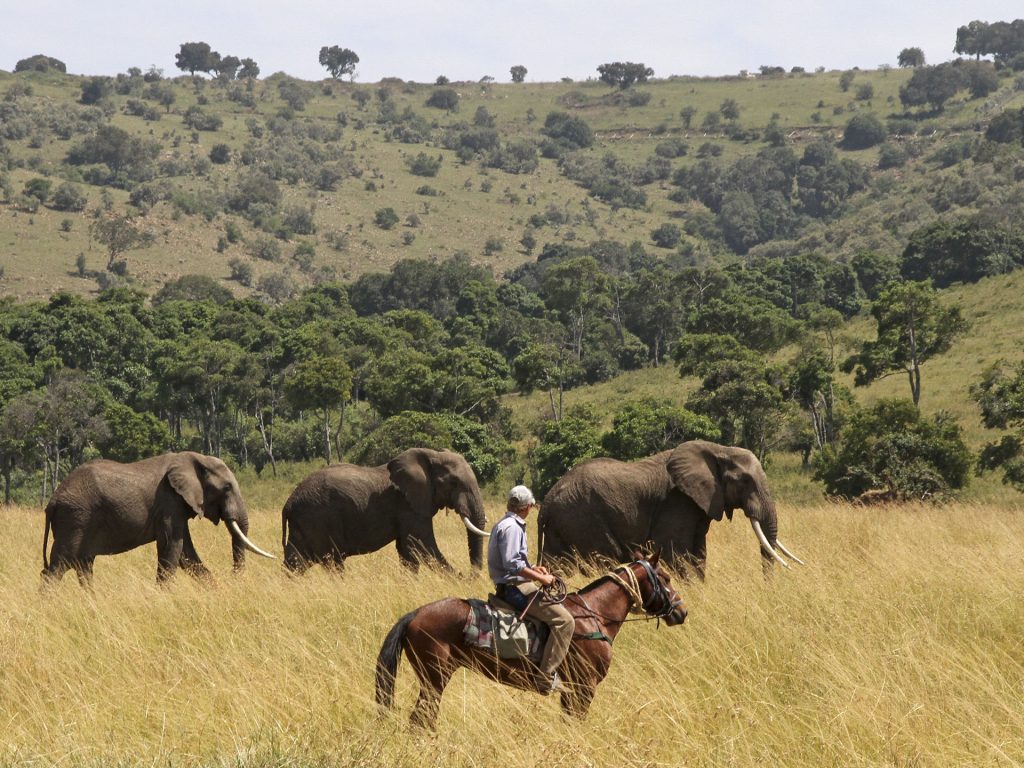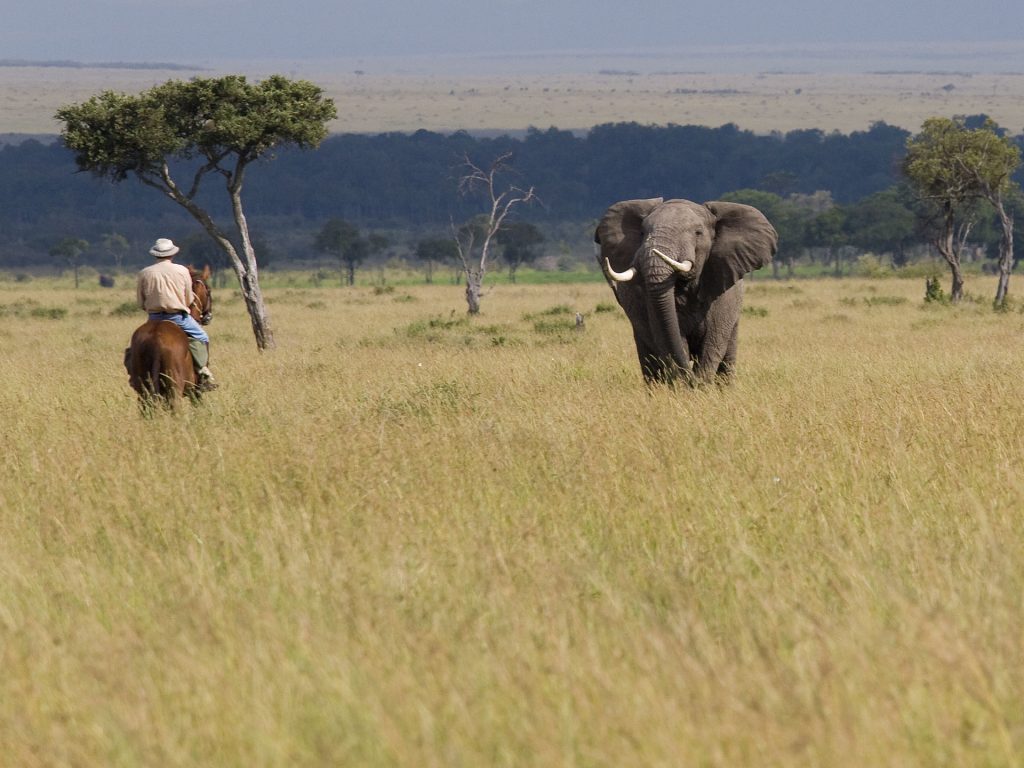Kenya and the Mara, a must for a Horseback Safari
Matias Carrillat
13 August 2020
No Comments
Why is Kenya the best place for a horseback safari?
Located at the east of Africa, Kenya is maybe the most known destination of the continent, and a very recommended option if this is the first time you go on a safari. Due to its incomparable fauna and big distances that incite us to cross them, this region gives us a perfect combination between challenge and pleasure. Intense hours of horseback riding along plains, rivers, hills are balanced out with the diversity and exclusivity of the animals we will see: from giraffes, hippos, buffaloes and elephants to wildebeest, including the unique chance to see the great spectacle of their he migration.
Following you will find the characteristics that make Kenya a unique destination worth visiting.


Horseback safari in Kenya: Landscape and geography
The first thing we will see, even before landing, will be the Great Rift Valley. An immense geological fracture of about 4,830 kilometers large from north to south. Contemplating its huge gorge from above is a magnificent spectacle: in its majestic landscape, the peaks of its mountains and its sparkling lakes stand out. Valleys, rivers and endless meadows, on which numeros national parks were set, stretch all around, among which we find the renowned Maasai Mara.
In the southwest of the country, we find the Maasai Mara, one of the most important natural reserves in Kenya. A crucial National Park for a safari in Africa. It has one of the most diverse ecosystems in the country, therefore, housing countless species and specimens of mammals and birds, and making it a sanctuary for some of the most wanted wild animals. Horseback riding along its vast plains until you cross the Mara River,on the edge of the reserve, is a journey worth experiencing. It is a place where the famous Game Drive will leave us breathless every day but more hungry for adventure as soon as the sun rises again. If you are interested in other countries where you can experience the Game Drive, don’t miss The ancient Botswana.
Another park worth visiting in Kenya is the Amboseli park. Declared a Biosphere reserve in 1991, this plain land, small in comparison to others, is known for being “The land of Giants”, since the largest number of big tusk elephants in the planet inhabit this place. It would not be strange to come across a herd of up to 100 elephants here. The name “Amboseli” comes from a Maasai word meaning “salty dust”, given that most of its territory consists of an arid plain covered by dry sand and dust. But the magic lies on its swamps that derive from ancient lakes, these spots where animals can cool off among all that aridity, while the emerald green reeds cover them up to their knees bathed in mud. And, behind them, in the background, the Kilimanjaro rises majestically over a thicket of acacia trees, making us deviate our attention from the impressive tusks, a characteristic feature of its fauna. If you are obsessed with Mount Kilimanjaro like so many other adventurers, here is an ideal ride: Mythical African Mountain: Looking for the elephants under The Kilimanjaro.
Among the Amboseli and Tsavo parks, we will find the Chyulu Hills: a mountain range that forms a volcanic camp of more than 7 thousand feet above the level of the plain. Its undulating land is covered by a wonderful green carpet that contains a vast number of aromatic plants and cedar forests. Since this place is not that well-known, crossing this land on a horse is a unique experience, only surpassed by the chance to experience camping in this unspoilt and natural environment. There we can let our horses be freed from their reins to gallop among volcanic ashes and craters, and even go for walks while we look for native tribes that inhabit these lands. All these while we are looked over by the impressive Mount Kilimanjaro, which shall watch over us like a god of nature and will remind us how small we are in comparison to the treasures of this world.
Finally, from the northeast edge of the Great Rift Valley to the snowy peaks of Mount Kenya, the Laikipia Plateau unfolds. This area of wide open spaces and farmland mosaics gives us a safari experience that competes with the wonders of the Mara -do not miss Laikipia: Private journey through the Laikipia plains and plateaus.
What once were lands used for livestock, now embodies the most successful and progressive conservation area of the country. Its vast plains are a natural refuge for wildlife and houses the best kept secrets of the African fauna. A more intimate experience is assured to us since these are private territories that limit tourism. And, to top it all, there is no place along this plateau where we can escape the magnificent presence of the second highest peak in Africa: Mount Kenya.


Horseback safari in Kenya: Flora and fauna.
In the territories that comprise the Great Rift Valley, we find a great variety of ecosystems such as savannahs, jungles, mountains, and rivers, which make it one of the most valuable ecological areas on the planet. In addition, its shimmery lake system was declared a World Heritage Site by Unesco in 2011. As for the Masai, this land has three different topographies.
On the one hand, we find areas of sandy ground and low bushes; on the other, around the Mara river, the land is endowed with grasslands and forests; and, finally, we find its vast open plains that cover most of the reserve.
Still, Kenya’s most dominant feature is found in its fauna. With its endless plains covered with wildlife, this country is ideal to experience the safari of a lifetime.
If we start with the main dish, the Masai Mara is home to more than 570 registered bird species and 95 mammal species, among which we will find the essential “Big Five”: lions, leopards, elephants, buffalo and rhinos. From our horses, we will be able to spot a variety of animals at very short distances, and, what is more exciting, get close to the biggest predators while they rest on the savannah: an experience that will make us feel the adrenaline. Yet, the leading role in this reserve goes to the wildebeest, as it houses thousands of specimens throughout the territory and are the stars of the Great Migration, the annual phenomenon in which millions of herbivores cross the Mara River in search of land to graze. If you want to closely experience the Great Migration, please see our proposal of Horseback Safari in Serengeti.
In turn, we will find different an exotic animal species in the Laikipia plateau that, for being endangered species, are protected in the conservation areas. Examples of these are the Grevy’s zebra, the reticulated giraffe, the black and white rhino, Thomson’s gazelle, wild dogs, among others.
In other areas, where the jungle dominates the land, we will find chimpanzees and gorillas, among other animals. In Amboseli, as we mentioned before, large herds of elephants parade along these lands making us think of the ghosts of those mammoths of the ice age. And, as far as the hills are concerned, we will find exuberant birds and diverse species of butterflies flying over its thickets.


Horseback safari in Kenya: Culture and history
In the Mara reserve we will have the chance to immerse ourselves into the culture of the Maasai tribe. This is an ancient tribe that, even today, keeps the same customs and lifestyle that centuries ago. They are an example of what thorough respect to nature and traditions looks like. Their huts, made of adobe and compost, are easy to identify because of their circular appearance, and they are protected with a kind of natural fence to prevent the attack of wild animals. But what is most fascinating are their inhabitants. Dressed with plaid blankets in red or blue tones, accompanied by bracelets, necklaces and different colored beads, they represent an antropologic icon of the African continent. Their vibrant and colourful culture is complemented by the simplicity and joy they irradiate. Getting in contact with these tribes transport us to an exotic, tribal, and elegant world in its purest form.
On the other hand, the Great Rift Valley is a natural phenomenon that keeps the biggest secrets of history. Once this great crack appeared, the territory became divided in two, provoking a climate change that made the east area drier, that is why the savannah emerged there first. It is believed that due to this natural phenomenon, the apes that used to live in the surroundings, on the trees, had to learn how to live on the ground, which gave rise to the first hominids. In this way, this great crack has now unveiled large extensions of geological strata, where human fossils dating back to the earliest times have been recovered, making this area the perfect spot to reflect on human evolution. It comes as no surprise that this place has been recognized as the cradle of humanity.


Kenya is home to mesmerizing fauna and landscapes, but above all, it represents a huge trace of the past. Riding along the wildest and most ancient areas of the continent will make us connect with nature in its purest form and our origins.


Leave a Reply